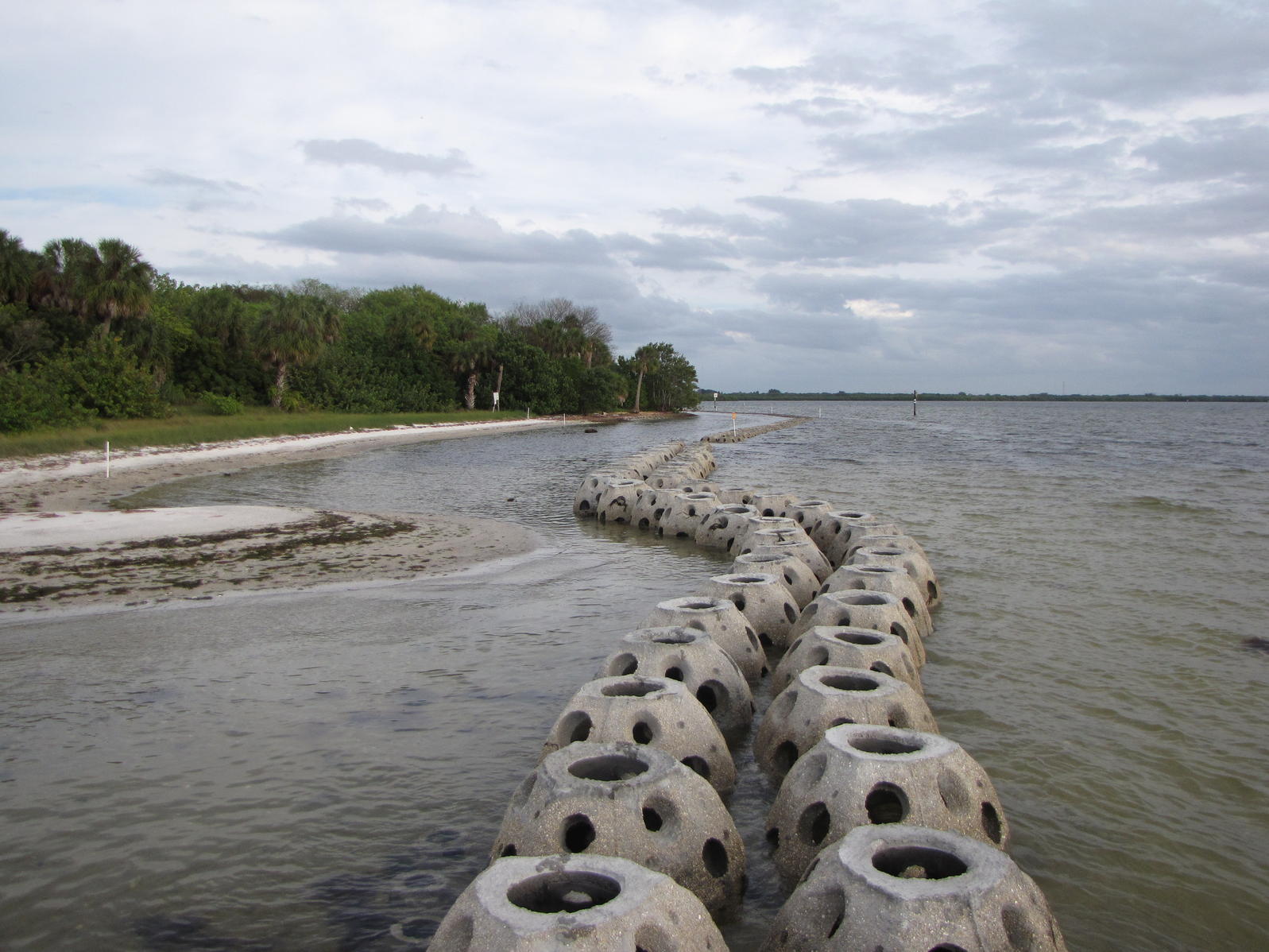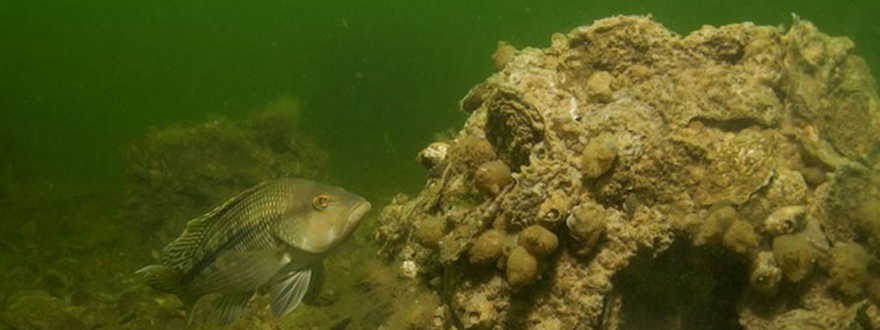It’s nearly Thanksgiving and all across the country, people’s thoughts are turning to food. For long-time Floridians, that means oysters – oyster stew, oyster stuffing and oysters Rockefeller.
For Peter Clark and the team at Tampa Bay Watch, Thanksgiving brings the opportunity to plant habitat for thousands of oysters – not for human consumption but to stabilize eroding coastlines, provide habitat and food for fish and birds, and filter nutrients and sediment from bay water so other creatures can thrive.

He’ll be leading groups of volunteers who have been building oyster domes to place them at Fantasy Island, a former dredge island that has been restored to function as habitat. Strong waves created as giant ships power past it, however, are eroding the eastern shore of the island. Oyster habitat – in the form of man-made reefs or concrete domes – slows the waves from ocean-going ships and helps prevent the island from washing away. (Learn more about erosion on islands in Tampa Bay.)
TBW volunteers have been working three days a week for months to build the domes for placement at Fantasy Island. The oysters spawn in late winter and early spring but the tiny larvae – called spat – must have a hard spot to settle on before they can begin to grow.

The Thanksgiving events – scheduled from Nov. 28 to Dec. 1 so the habitat is in place before spawning begins – will be hard work, notes Eric Plage, TBW’s environmental specialist in charge of oyster restoration. “We’ll be moving 571 domes that weigh about 150 pounds each to Fantasy Island,” he said. “We’ll be using a crane to put them on the barge, but we’ll need people to help get them into place once we roll them off the boat.”
The new domes will join others placed by Tampa Bay Watch at MacDill Air Force Base and by Audubon around the islands at the Richard T. Paul Alafia Banks Sanctuary.
Historic Decline
Some reports show harvests of more than 300,000 pounds of oysters from Tampa Bay in the late 1800s. During the mid-1960s, around 100,000 pounds of oysters were harvested in Pinellas County, with 40,000 pounds more coming from Hillsborough County, according to a Bay Soundings article written by Ernest Estevez, senior scientist emeritus at Mote Marine Laboratory. By the 1970s, unchecked sewage contaminated the oysters so they were unfit for human consumption and then the oyster reefs and shell middens were dredged from the bay to build roads and homes.
Also, as I read through the article to see historical harvesting rates I came up with something interesting. In the 1960's they were harvesting 100,000 lbs. a year of oysters. Also it should be noted that oyster reefs and shell middens were dredged or removed from the bay for roadbed and other construction material uses.

More recently, portions of Boca Ciega Bay and Lower Tampa Bay have been classified as “conditionally approved” from the Florida Department of Agriculture, which allows oyster harvesting south of the main shipping channel, according to Steve Geiger, research scientist at the Florida Fish and Wildlife Conservation Commission. Other areas, including the section of the bay south of the Intercoastal Waterway to the shipping channel are currently closed year-round for “administrative” reasons. Pinellas Point reefs and Boca Ciega south of the Bayway are permanently closed, as are Boca Ciega Bay north of the Bayway. Be sure the check the status of conditional areas before harvesting, http://shellfish.floridaaquaculture.com/seas/seas_southgulf.htm to confirm harvesting is safe and allowed. If the status is currently shown as closed, it is not legal to harvest shellfish
TBW is focusing its efforts on areas where oyster habitat could prevent erosion of critical habitat — placing about 400,000 pounds a year of oyster shell to restore those hard-bottom communities.
At the same time, Tampa Bay Estuary Program is working on a program to map hard-bottom habitat – including oyster reefs – and set goals for restoration.
“Historically, oysters historically have been distributed throughout the bay, probably with larger populations in and around river and creek mouths where regular salinity variation occurs, helping to protect them from predators,” notes Gary Raulerson, TBEP ecologist. “Today, ‘conditional harvesting’ of oysters is allowed only in the lower part of the bay where water quality is better because stormwater and septic tank runoff is more influenced by tidal action.”

Photo courtesy Tampa Bay Estuary Program
The existing distribution of oyster reef and hardbottom habitats in Tampa Bay has never been comprehensively mapped, he adds. Developing such a map remains a significant research challenge due to both the sparse distribution of these habitats, as well as the difficulties in detecting them. Some are nearly level with nearby sediment or seagrasses (where oyster spat won’t settle) or growing on hard surfaces like seawalls and bridge supports that limit detection via aerial surveys.
The Southwest Florida Water Management District has agreed to include oyster reef habitat in its every-other-year seagrass count to estimate the extent of reefs in Tampa Bay which will allow for the establishment of meaningful protection targets for these poorly understood habitats, Raulerson adds.
But even if you are never lucky enough to eat an oyster from Tampa Bay, remember that one single bivalve can filter up to 10 gallons of seawater per hour, making the bay a better place for everything else that lives in it!
Tampa Bay Watch volunteers will meet at Williams Park Boat Ramp, 8749 U.S. 41, Riverview, FL 33578 Nov. 28 to Dec. 1, 2017. The boat ramp is on the west side of US 41 (Tamiami Trail) where US 41 and the north side of the Alafia River intersect. The minimum age to participate is 16 years old. The project is 9 a.m to 3 p.m. each day and lunch will be provided. If you can’t stay for the full day, plan for a morning or afternoon shift. Pre-registration is required — to sign up to help place oyster domes and wear off a few of those Thanksgiving calories – visit www.tampabaywatch.org.
And if you miss the daily events hosted by TBW, the TBEP and its sister Sarasota Bay Estuary Program will be “bagging up” oyster shells to build an oyster reef on Saturday, Dec. 12 at the Robinson Preserve in Manatee County. Register by emailing misty@tbep.org.
Originally published 11/21/17.
